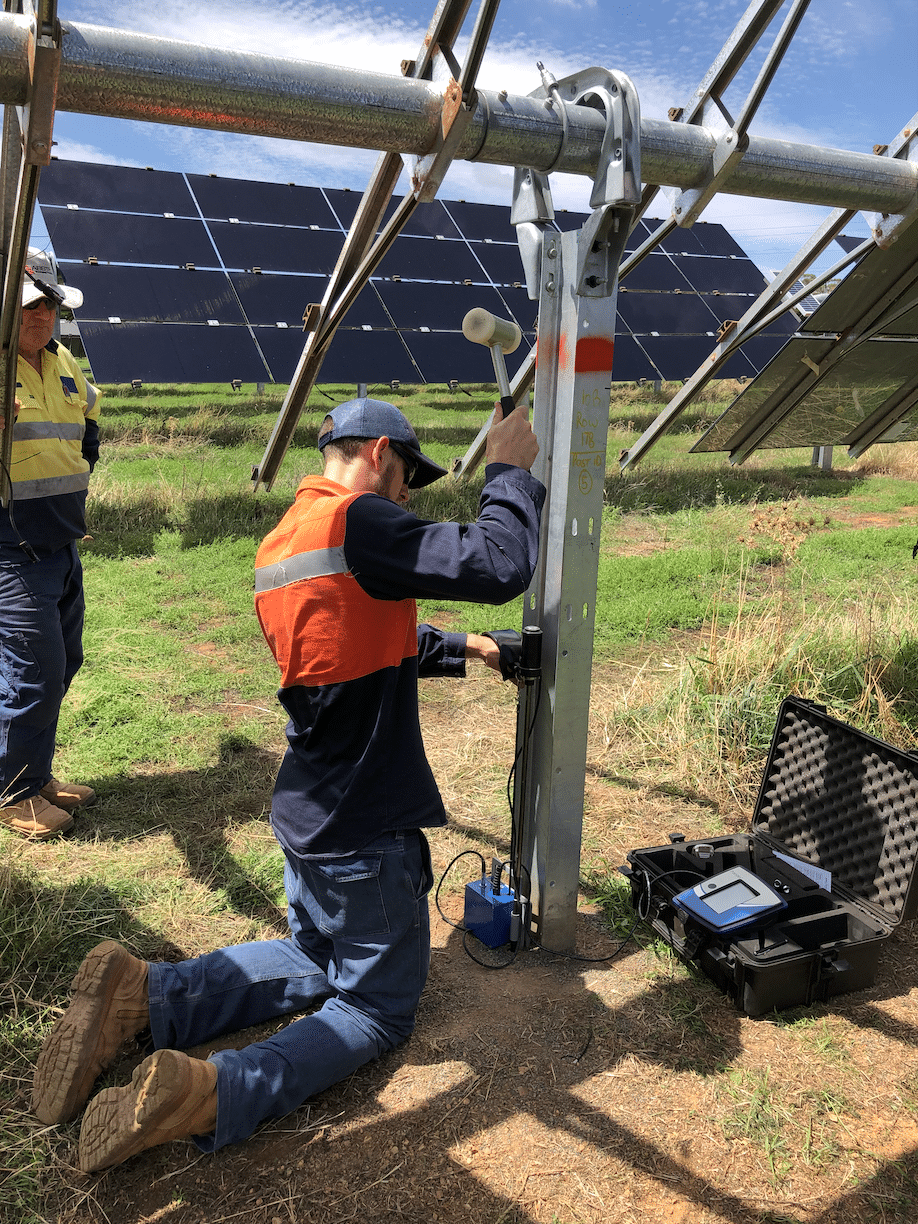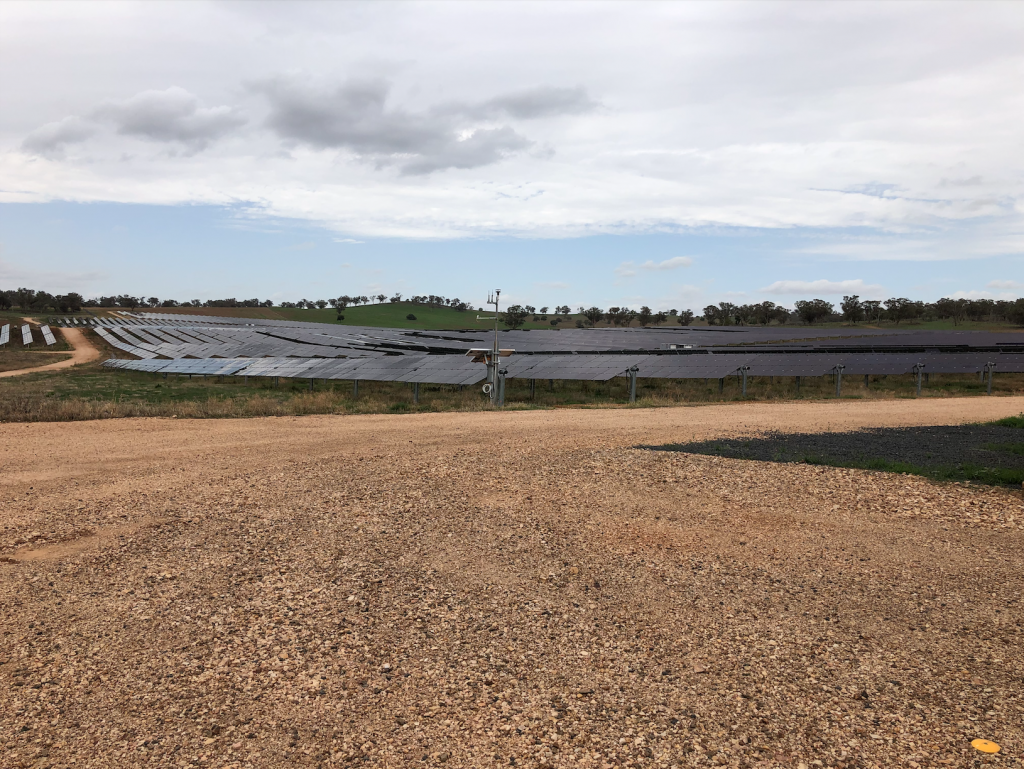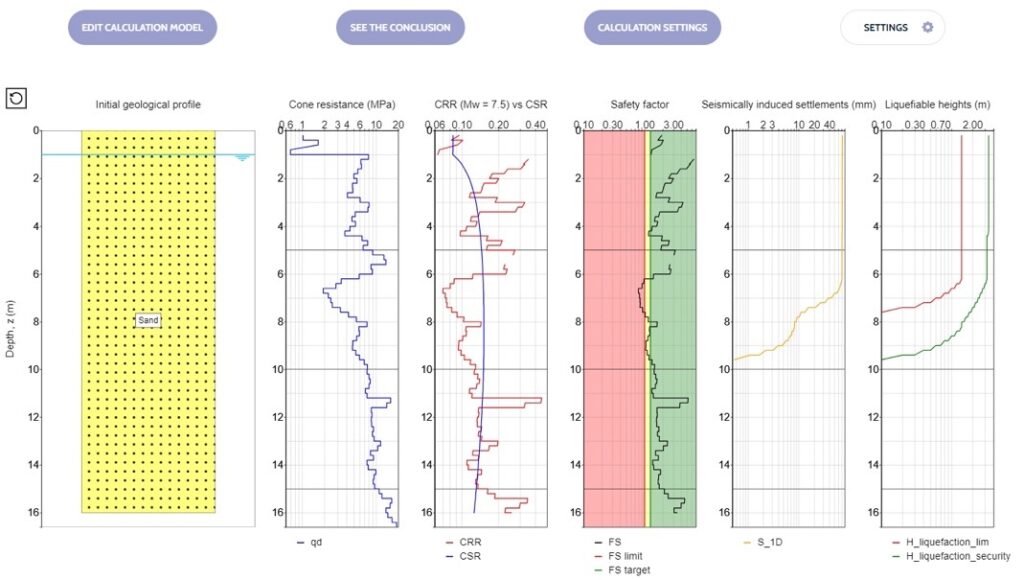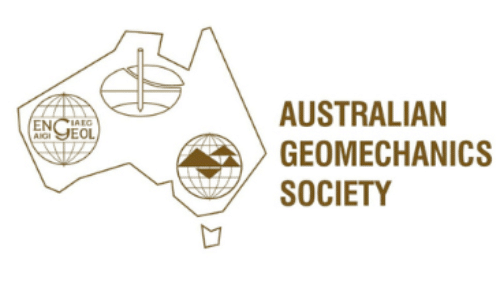Forensic Review of Solar Farm Piles Post Construction
We always like getting involved in helping our clients solve difficult problems. This was on one of the world’s largest grid-connected PV power plants.
Thousands of solar PV tracking panels across several hectares were built in NSW as a solar farm. However the project had been rushed to be finished.
After noticing some of the solar panels were beginning to lean and ground subsidence around some piles, it was necessary to understand and quantify the problem and it’scause, identify where the focus of rectification efforts needed to be and to evaluate different rectification methods. Left unchecked, the panel frame could become distorted, cracking PV panels and preventing the tracking mechanism from operating. Further, there was a risk of pull-out failures due to the wind.
Pull test and lateral tests were time consuming to carry out on the fully constructed and operational solar farm and required the PV panels themselves to be removed.
Aurecon saw an opportunity with the PANDA® probe to:
- Better understand the problem (lack of compaction around the piles)
- Triage the site to quantify the magnitude of the problem and focus rectification efforts
- Assess different rectification approaches against each other to better understand the problem (lack of compaction around the piles)
Further, due to the solar farm being post construction, it was necessary to use a tool that could be operated underneath the panels and very close to the piles.
The PANDA® Instrumented Variable Energy Dynamic Cone Penetrometer (DCP) is used to identify the strength vs depth profile for soil investigation and compaction control. If tip resistance was consistently high over the full pile depth, then there wouldn’t be an issue with the piles and they would pass the pull test and lateral test.
For more information on the PANDA® Instrumented DCP and purchasing, rental and training options, please visit our website @ https://www.insitutek.com
Since hiring the LWD I have used it on numerous jobs in a wide variety of material types all over WA. The ability to give “real time” test results have worked particularly well for me as i can show my clients numerical values which gives them a direct understanding of some of the benefits using Betta Roads has brought to their road construction projects. The feedback I have been receiving over the last few months has lead me to purchase the LWD and incorporate its use as an integral part of our projects.
Insitutek is our partner overseas for our test equipment. Ask them for a presentation or training for our products. I am sure you will be satisfied. They are a reliable and very kindly partner.
We have been very happy with the support from Insitutek. They are knowledgeable and have been super responsive and flexible to our needs.
Insitutek Blogs
We find clients are often looking for ways to improve geotechnical testing outcomes and do it more efficiently at the same time. This drives their buying decision making. Australian Soil and Concrete Testing (ASCT) was a case in point when they were searching for Plate Load Test equipment for their upcoming Collector Wind Farm project. Some of the things that motivated them include: […]
We are excited to introduce the addition of a new Liquefaction Risk Estimation module in WebSprint©. Paired with our cutting-edge products, PANDA® and GRIZZLY®, this module enables you to assess the liquefaction risk of soils exposed to seismic stress. PANDA® Instrumented DCP: This cutting-edge tool provides dynamic penetrometer soundings, delivering precise data crucial for seismic risk evaluations. GRIZZLY® […]
The Australian Geomechanics Society is gearing up for a series of geotechnical events across VIC, WA, NSW, and SA-NT. We are thrilled to inform you that we will be sponsoring and attending these exciting geotechnical events, and we would love for you to join us. It’s a fantastic opportunity to catch up, explore our booth (VIC), and stay informed about […]





